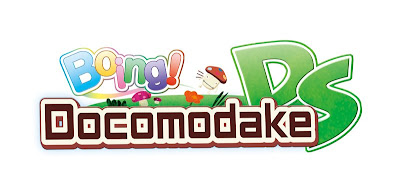Wrapped up in World of Warcraft-inspired graphics, King’s Bounty is a wonderful turn-based strategy game, packed with RPG elements and lots of neat touches.
Choosing to play as a Warrior, Paladin or Mage, you set off on your trusty steed to explore the lush and lively world of Darion, as official treasure hunter of the King. It’s not exactly the strongest of game plots, but you’ll come to realise it really doesn’t matter.
 Unlike the majority of strategy games on the market, no one in King’s Bounty is out to invade your country or steal your resources. Instead, the game lets you go about your business at your own pace.
Unlike the majority of strategy games on the market, no one in King’s Bounty is out to invade your country or steal your resources. Instead, the game lets you go about your business at your own pace.You can travel freely over the countryside, but as soon as you come into contact with an enemy, the game switches to a hex-based grid. Both sides line up at opposite sides of the battlefield and knock lumps out of each other in a turn-based manner.
Aside from the tutorial, the game's main character never appears on the battlefield. Instead, you have to enlist an army to aid you on your travels. And it’s this aspect which proves to be the ace up King’s Bounty’s sleeve.
 While there are RPG standards included, such as Knights, Bowmen and Clerics, you can also add giant dragonflies, skeletons, ents, werewolves, vampires, bears, unicorns, zombies and seed-shooting plants to your ranks...and that’s just the tip of the iceberg. There’s an incredibly diverse range of allies to recruit, all with their own strengths and weaknesses.
While there are RPG standards included, such as Knights, Bowmen and Clerics, you can also add giant dragonflies, skeletons, ents, werewolves, vampires, bears, unicorns, zombies and seed-shooting plants to your ranks...and that’s just the tip of the iceberg. There’s an incredibly diverse range of allies to recruit, all with their own strengths and weaknesses.You can only have control over five classes at any one time, so players can experiment with different set-ups to their heart’s content.
Although there are only five of your characters on screen, each figure represents multiple units. By advancing your leadership skills by undertaking quests and finding banners scattered about the map, you can recruit more units and eventually command a sizeable army.
 The gameworld is littered with quests and shiny trinkets, which are usually guarded by an enemy or two. By clicking on an enemy, you can see how they match up against your squad. An even match usually results in a tense and keenly fought affair, while anything higher and you are advised to steer well clear.
The gameworld is littered with quests and shiny trinkets, which are usually guarded by an enemy or two. By clicking on an enemy, you can see how they match up against your squad. An even match usually results in a tense and keenly fought affair, while anything higher and you are advised to steer well clear.You are also able to tweak your squad’s abilities by assigning points to a three-tiered skill tree. By choosing to put points into Might, Mind and Magic, you can fine tune your squad to suit your own personal tastes.
Graphically, the game’s nod to World of Warcraft is an inspired touch and its aesthtically appealing visuals will hopefully draw people in to experience this wonderful game.
It takes an hour or so to get its hooks into you, but once it does, King’s Bounty becomes a daily obsession.
 You’ll quickly forget all the overblown fantasy fluff on display, and hours will slip by as you explore the sizeable world, searching every nook and cranny for quests and treasures, and the urge to find new locations and recruits becomes highly addictive.
You’ll quickly forget all the overblown fantasy fluff on display, and hours will slip by as you explore the sizeable world, searching every nook and cranny for quests and treasures, and the urge to find new locations and recruits becomes highly addictive.It’s not all perfect, though. The camera control, while adequate, isn’t perfect, and if you run out of troops, a lot of backtracking must be undertaken in order to swell your ranks. The script’s rough translation can be a hinderance, and occasionally it make no sense, but at least it leads to uninentional laughs.
It’s a game crammed full of memorable moments and because aspects of the game are randomly generated, everyone will have their own stories to tell.
The game is currently enjoying healthy reviews across the board, with 81/100 rating on Metacritic and a 8.7/10 rating on Test Freaks. It may be regarded as something of a niche title, but it's a game everyone should check out.



















































